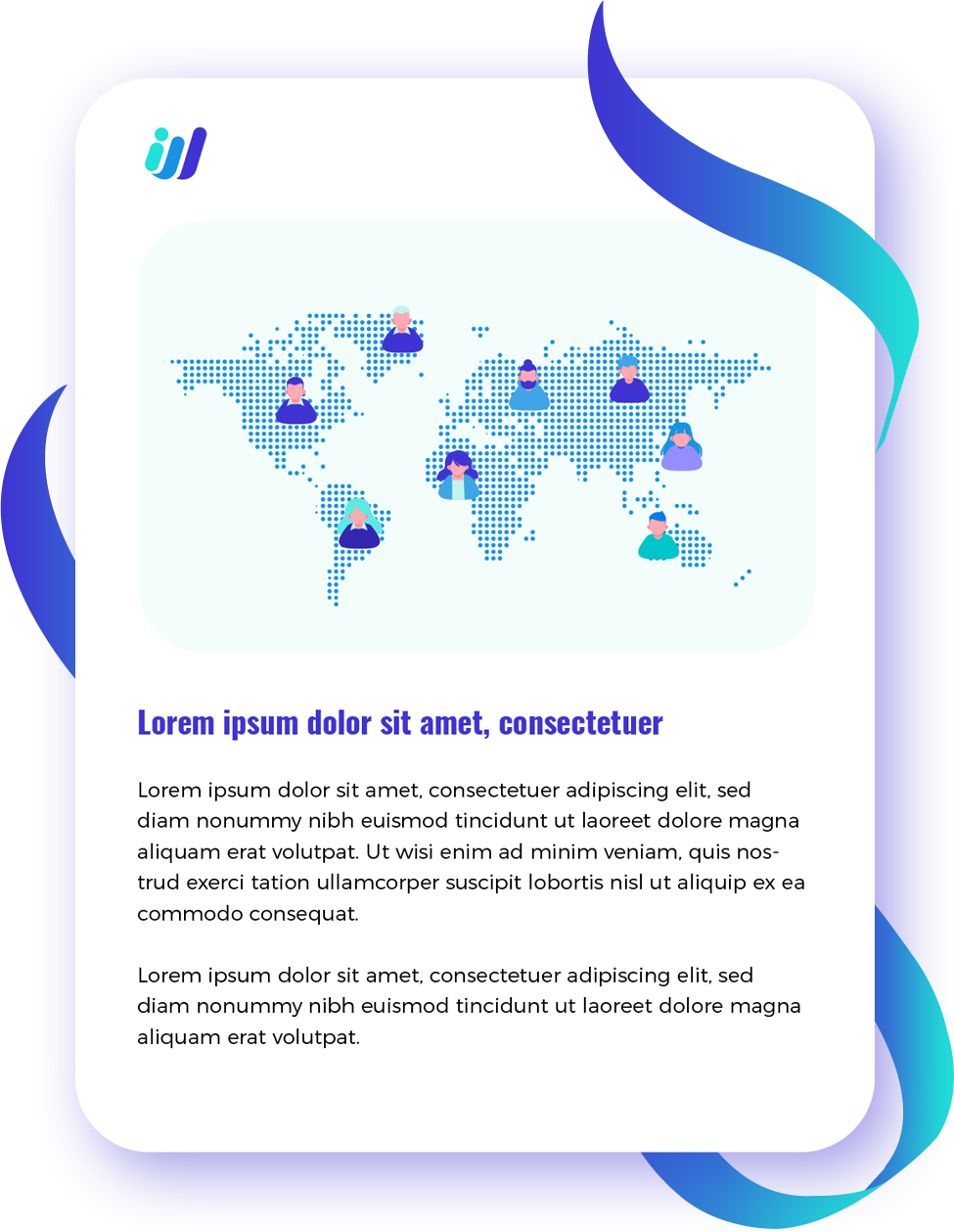Your organization’s future depends on attracting top talent. Building a talent pipeline increases your chances of hiring the best candidates for your future growth. When you hire the right candidate, you’ll reduce employee turnover and increase productivity. If you hire the wrong candidate, you can damage your company’s culture and waste training resources on a temporary employee.
Building your talent pipeline requires a comprehensive strategy that targets the right candidates. Online recruitment initiatives can include creating a career page on your website and promoting your company as an exciting place to work through online channels. In addition to encouraging employee referrals, attend events to meet candidates in person.
What is talent sourcing?
The process of sourcing talent involves actively searching for qualified candidates. As part of this process, your team engages with prospective candidates who can be moved into your talent pipeline to fill current and future positions. An example of outreach recruiting includes building an employer brand, so candidates are aware of your company’s benefits.
Only 36% of the workforce is actively seeking a new job at any given time, but 90% are willing to talk and learn more. Recruiting talent attracts a large number of applicants. A candidate pool like this includes passive and active candidates who would not be aware of your company or open opportunities without your candidate sourcing initiatives, such as recruitment marketing. To find the right candidates, you need to manage your talent pipeline.
According to our recruiting benchmark research, sourced candidates are more than twice as efficient as applicants. On average, one out of every 72 sourced candidates is hired. Comparatively, one out of every 152 outside applicants is hired. The figure is even more impressive when you consider that applicants are actively interested, while sourced candidates may not be.
The 10 Best Ways to Source Talent
What is the best way to find top talent? You can fill your funnel with qualified candidates by using the following candidate sourcing strategies.
1. Stay close to the hiring manager throughout the entire process
Be on the same page with your hiring managers about what a strong candidate looks like early and often. One of the best ways to source candidates is through this method.
Get on the same page and improve your communication by following these tips:
- Once you receive a job posting, schedule a kickoff meeting to discuss the role and align on must-haves and nice-to-haves.
- Create a list of sourcing channels where your ideal candidates may be active, and a list of role-specific keywords to search for.
- Examine a few candidates together to determine if they are a good fit.
- To find the right number of candidates, review the overall talent pool and determine whether the requirements need to be tightened or relaxed.
Don’t stop after the kickoff meeting. Throughout the recruitment process, keep in touch with your hiring manager and refine your search with their feedback.
2. Build a pool of the best global talent
Investing time in sourcing quality candidates won’t just result in a hire – you’ll also have qualified candidates for future roles. Re-engaging candidates is a missed opportunity for many companies. Fewer than half of employers re-engage declined candidates, despite believing that doing so will help them build their talent community and protect their employer brand.
Take advantage of your team’s past efforts by starting every search with candidates your team has already researched and deemed qualified for your organization. Working with archived candidates requires a plan for engagement.
Keep communication open. Provide a great candidate experience and ensure that candidates are archived appropriately so they can be found again.
3. Make use of multiple online channels to source candidates
When it comes to finding candidates, most recruiters have their go-to channels. More than half, 52%, say they turn first to their professional network, and 28% turn first to LinkedIn. What’s the point of stopping there? Candidate sourcing methods are common for a reason – they work! Consider adding some less frequently used sources as well. Less conventional websites may be more receptive to outreach messages, while profiles on such sites can provide unique information that can be used to personalize outreach efforts. There are many possibilities on the internet. To find your target candidates online, you need to understand your target audience. Try Triplebyte if you’re looking for engineers, Hired for tech talent, or Underdog if you’re hiring for a startup.
4. Make use of your employees’ networks to find candidates
Recruiting from employees’ networks can expand an organization’s talent pool ten times. See if anyone in your employees’ networks would be a good fit for one of your open positions by conducting candidate sourcing sessions with your team. Employees can help you find untapped talent and improve response rates from candidates they know. With Facebook, for example, you can have your employees search for candidates based on their own social graph, so you can uncover candidates you wouldn’t have found otherwise. Using Sourcing.io, your employees can connect their LinkedIn, Twitter, and GitHub accounts so you can see who is already connected. With a candidate sourcing tool like Teamable or Simppler, you can also automate this process by recommending candidates based on your employees’ social networks. To increase your candidate response rate, ask your employee to send a warm introduction to a qualified candidate instead of sending a cold email.
5. Recruit offline also!
Your engagement is amplified by online channels without a doubt. However, offline recruitment methods remain powerful. Finding new candidates is easier when you meet them face-to-face at events.
Organize meetups or conferences tailored to your job or industry to meet people you’d like to meet. You will have less competition as an employer, and candidates will be more likely to respond to your follow-up messages after meeting you in person. Consider asking others in your organization to keep an eye out for great candidates as well – sourcing should be a team effort!
6. Find candidates for roles that aren’t open yet
Recruiters typically source candidates based on what they need to fill: “I have X job to fill, so I will source candidates for that job.” However, the most advanced recruiters get even more proactive with their sourcing efforts and get ahead on what they’ll need to fill in the future. A proactive approach begins by building personas, according to Sedef Buyukataman, Talent Brand Strategist at Proactive Talent Strategies.
How? Take a look at your business growth plans first. Develop a workforce hiring strategy based on your company’s vision and cost model to determine when to make hires across the year. After you have identified which teams need to grow, you can work with your leaders and partners in Finance and HR to determine the level and skillset needed. You can begin to source for specific profiles (personas) in a focused, ongoing manner with those skills and what you know about the company and team culture.
When your hiring manager asks for a junior Java developer who is also a master of automated testing, you’ll already have candidates ready.
7. Make sure your outreach messages are perfect for sourcing candidates
It doesn’t matter how hard you work to source the right candidates if they don’t engage with you. In your talent sourcing process, outreach can be helpful.
A few basic tips to make your outreach recruiting messages more candidate-focused are included in these outreach recruiting examples. It can be viewed as a way to provide superior customer service to your prospective candidates, since the messaging is similar. Your focus should be on their needs and wants. Not your company’s goals, but the candidate’s. By putting your talent first, it turns the tables on traditional hiring methods.
Here are a few general guidelines:
- Ensure your subject line stands out and makes the candidate want to open and read it.
- Be sure to include relevant information about the candidate in your message.
- Give a brief description of the role and your organization.
- Describe how they could contribute to the team.
8. Establish a strong employer brand
An employer’s brand can make the difference between a candidate responding to your outreach or ignoring it. Candidates won’t respond to your outreach if they perceive your employer brand negatively, and an unknown employer brand can also stymie your efforts. A strong employer brand, on the other hand, can be an incredibly effective recruiting tool: 92% of candidates would consider leaving their current jobs to join a company with an excellent corporate reputation.
9. Don’t give up on candidates who don’t respond
You might get a few responses to your first cold outreach email, but you spent too much time researching and building lists to stop there. If a salesperson contacted leads once and then quit, they would never close a deal.
After your first round of outreach, keep in touch with candidates who weren’t ready to move when you first approached them, as well as candidates you sourced, but didn’t hire, for other roles.
A good rule of thumb is to wait six months before contacting a candidate again, but there are other occasions when it makes sense to do so. Candidates can be sent company news, congratulated on work milestones, wished a happy birthday, asked how big projects went, and even congratulated on new jobs. You want to stay top of mind with your best candidates, so you’re the first to know when they’re ready to move on. In addition, even if they aren’t interested, they may refer someone who would be a great match.
Conclusion
To win the best candidates for your team, you need to be more strategic. The competition for top-tier talent is fierce, so you must go out and find the candidates you need for your organization to succeed. Your pipeline can be filled with qualified talent with these candidate sourcing strategies, so you can choose the best hire for your company.
In order to remain competitive, businesses increasingly turn to outsourcing to access global talent. Businesses can stay ahead of the competition and maximize their potential by utilizing outsourcing opportunities.
Let us help you find top talents in IT, technical support, digital marketing, and cloud services so you can leverage all the benefits of outsourcing in the new normal. Request a FREE copy of the e-book on Third Wave Outsourcing .



